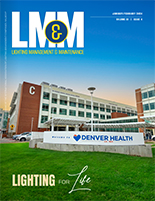Daytime light exposure decreases sleep disturbances, depression and agitation
CONTACT: Corinne Lederhouse, 630-737-9700, ext. 9366, [email protected]
BALTIMORE – June 5, 2018 – A tailored lighting intervention in nursing homes can positively impact sleep, mood and behavior for patients with Alzheimer’s disease, according to preliminary findings from a new study.
People with Alzheimer’s disease and related dementias may experience sleep problems, wandering, and associated daytime irritability. This study tested whether a tailored daytime lighting intervention could improve sleep and behavior in Alzheimer’s patients living in long-term care facilities.
Compared to baseline and to the inactive lighting condition, the lighting intervention significantly decreased sleep disturbances, depression and agitation. While all measures improved, the most significant improvement was seen in sleep quality.
“Here we show that if the stimulus (light dose) is carefully delivered and measured, it can have a strong impact on sleep, depression and agitation,” said principal investigator and lead author Mariana Figueiro, PhD, a professor and director at the Lighting Research Center at Rensselaer Polytechnic Institute in Troy, New York. “Depression was a secondary measure, and I was pleasantly surprised by the positive impact of the light treatment on depression scores.”
The study involved 43 subjects diagnosed with Alzheimer’s disease and related dementias who were exposed to an active and inactive tailored lighting intervention for successive 4-week periods, spaced by a 4-week washout period. The lighting intervention was added to spaces in which patients spent most of their waking hours and was energized from wake time until 6 p.m. Calibrated personal light meters monitored exposures. Measures of sleep disturbances (Pittsburgh Sleep Quality Index), mood (Cornell Scale for Depression in Dementia) and agitation (Cohen-Mansfield Agitation Index) were collected at baseline and during the last week of the intervention.
The research abstract was published recently in an online supplement of the journal Sleep and will be presented Tuesday, June 5, in Baltimore at SLEEP 2018, the 32nd annual meeting of the Associated Professional Sleep Societies LLC (APSS), which is a joint venture of the American Academy of Sleep Medicine and the Sleep Research Society.



